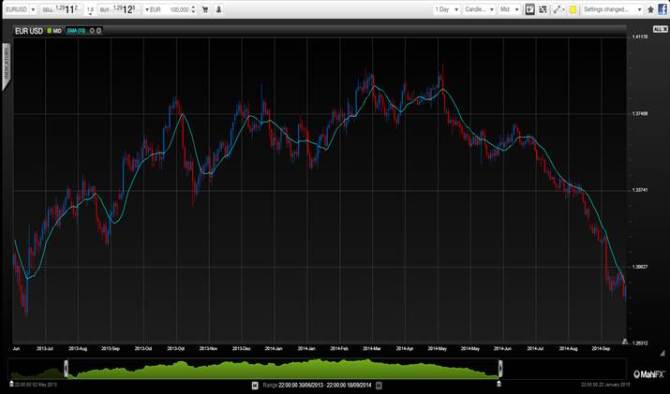In the dry world of monetary policy something very significant is happening – the US interest cycle looks close to turning and when it does it will be a historic event which could further realign forex levels.
Versus a basket of currencies, USD is already at its highest levels since 2010 and has the capability to go higher still. This time it is gaining on good news rather than acting as a safe haven for frightened capital.
The press releases relating to the FOMC meeting of the US Federal Reserve were laced with caution and caveats. But basically it noted that the US economy is improving as is the jobs market and interestingly the Fed thought it a good time to release a statement about how it would normalise monetary policy, which is significant in itself.
By Justin Pugsley, Markets Analyst MahiFX
Now that the end of quantitative easing – set for October – is taken as a given by the markets the Fed is now paving the way for higher interest rates, which is likely to happen in H2, 2015. It will be the first time US rates have been increased since June 2006, which will be a historic moment. The Fed is hoping that the better prepared the markets are for the event – the less disruption it will cause when it actually happens.
EUR/USD – how low can it go?
While the Fed is exiting, others are just getting started
Besides a tighter monetary policy bias, USD is supported by a number of other factors. The Bank of Japan is still doing quantitative easing, which could see USD/JPY take-out levels of 115-120 within the next six months.
The European Central Bank, meanwhile, is shifting closer to a much more lax monetary policy, which could take EUR/USD all the way down to 1.2000. Given the Eurozone’s structural problems defeating deflation tendencies and stimulating economic growth could require an epic amount of stimulus.
The other factor is that the US has benefited enormously from cheap energy due to fracking. It has supported consumer spending amid weak wage growth, has helped manufacturing and the trade balance. All USD positives.
However, it isn’t all rosy. One of the major concerns is the low rate of worker participation in the US labour market, currently only 62.8%, it was 66% in December 2007. It’s important whether this is structural, possibly due to more retirees, or if it is cyclical and therefore has further room to expand.
If it is structural i.e. there aren’t going to be many more people entering the work force, then wage increases may not be that far behind and once unleashed could rise quickly. That could force the Fed into raising interest rates more quickly and higher than expected. The other issue with keeping interest rates too low for too long is that it could fuel dangerous asset bubbles and at the moment those look more of threat than inflation.
However, the worrying aspect when reading into the FOMC comments is the uncertainty the Fed seems to portray over the outlook for the economy. The best traders can do is match the Fed’s intentions with their own analysis of the economic data – because it appears that at the moment the Fed is not a lot wiser about economic conditions than the markets. That’s partly because many of the forward indicators it uses have been distorted by QE.


